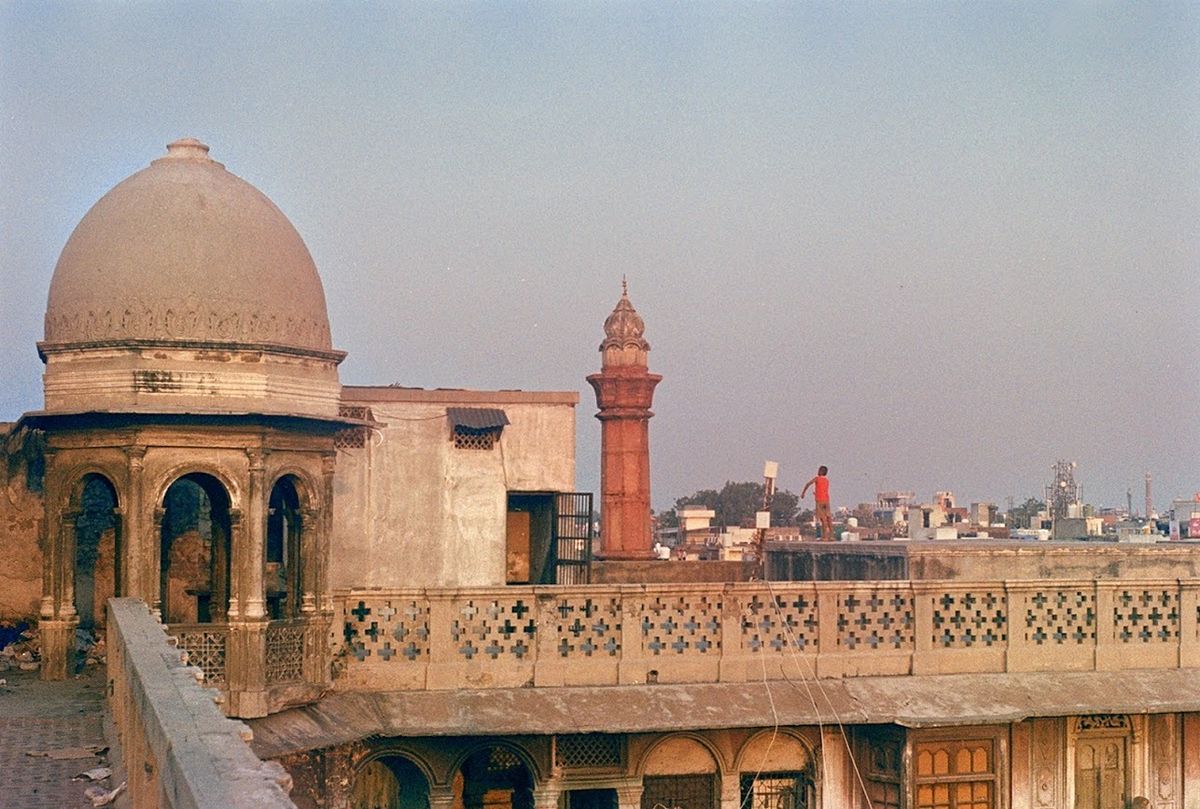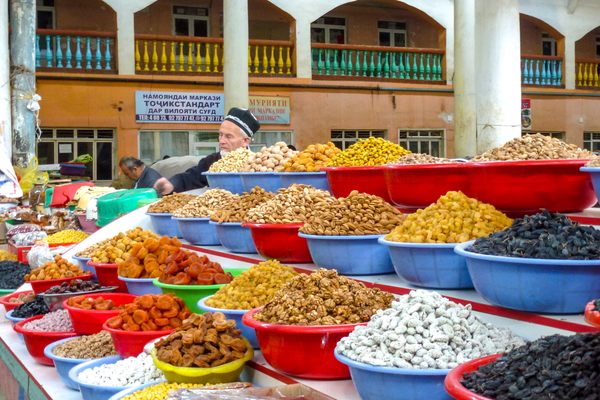About
Old Delhi is bursting with history and with modern-day activity. Built by the Mughal emperor Shah Jahan in the mid-1600s as a walled city called Shahjahanabad, it served as the empire's capital from then until the British Raj gained supremacy in 1857. Though India’s current center of government rests a few miles south in New Delhi, Old Delhi has stood the test of time as a center of commerce.
The street of Khari Baoli might be the most lively and fascinating piece of Old Delhi. It is certainly the most pungent, because it hosts one of the world’s largest wholesale spice markets. The myriad bright and wonderful spices that enliven Indian cooking are displayed in large mounds and traded in giant sacks. Walking through the market is an experience in itself, but it is hard to find a vantage point from which to survey its full glory.
The rooftop of the Khari Baoli wholesale spice market, also known as Gadodia Market, provides this perspective. The market is a multistory rectangular building built in the 1930s around a large courtyard by a wealthy merchant named Seth Lakshmi Narain Gadodia. Its architecture is intricate, with large chattris [domed pavilions] at each corner of the roof as well as complex balconies and arched doorways on lower stories. The rooftop is free to access and provides expansive views of the street markets, the stunning Fatehpuri Masjid mosque, and on clear days even the Red Fort. In the morning and around sunset, it is an ideal place to relax and watch life go by in one of the world’s most historic cities.
While the roof is an oasis of quiet in Old Delhi’s din, it also plays host to its own lively rhythms. Boys and young men fly kites from it, and merchants use the space to dry spices and vegetables. Calls to prayer from the nearby mosque wash over it. Traveling vendors from other states also use the courtyard and roof as a place to rest or sleep. It is a living piece of the city’s history.
According to the New Indian Express, the spice trade lost most of its business during the height of the COVID-19 pandemic and national lockdown. Future visitors can help maintain this incredible place which combines the past and present.
Related Tags
Know Before You Go
Timing: While there are no formal open hours, there are informal local watchmen who will not allow visitors to access the rooftop after sunset. To be safe, plan to arrive by 5:00 p.m. in the winter or 6:00–6:30 p.m. in the summer. Morning and evening are the best times to visit for nice light and cooler temperatures.
Fees: It is free to visit the rooftop. Locals may offer to show visitors the way and explain some history for a fee, but it is not necessary to pay anyone. That being said, consider carrying cash to take advantage of the great prices for spices and dried fruits in the surroundings shops.
Safety: The main road has a great deal of traffic; take care when crossing. While the vast majority of people are welcoming, be alert for pickpockets because the dense and hectic atmosphere provides easy cover. The area is dominated by men and local women are scarce on the rooftop, so there may be more risk for solo women.
Navigation: Even though the market is in the Old Delhi neighborhood, it's still within the city of New Delhi. To find the building, enter the Gadodia Market's large courtyard from the main Khari Baoli road. There are eight unmarked staircases going up from the courtyard to the roof, located at the corners of the courtyard. Find any of these and climb to the top. Finally, it is worth noting that the term “Khari Baoli” refers to multiple sites. The larger neighborhood, the main road that runs through it, and the specific wholesale spice market itself. Use the more specific term “Gadodia Market” to get to the right place.
Delhi and Rajasthan: Colors of India
Discover Colorful Rajasthan: From Delhi to Jaipur and Beyond.
Book NowCommunity Contributors
Added By
Published
March 23, 2021
Sources
- https://www.newindianexpress.com/cities/delhi/2020/may/30/panic-grips-old-delhi-spice-market-after-traders-test-coronavirus-positive-2149955.html#:~:text=historical%20mosque%20Fatehpuri.-,Gadodia%20market%20was%20named%20after%20a%20wealthy%20merchant%20of%20old,tracing%20is%20a%20difficult%20task.
- https://en.wikipedia.org/wiki/Old_Delhi
- https://onthegrid.city/new-delhi/old-delhi/gadodia-market
- https://www.google.com/books/edition/Possessing_the_City/iTG-DwAAQBAJ?hl=en&gbpv=1&dq=Seth+Lakshmi+Narain+Gadodia&pg=PA215&printsec=frontcover











































